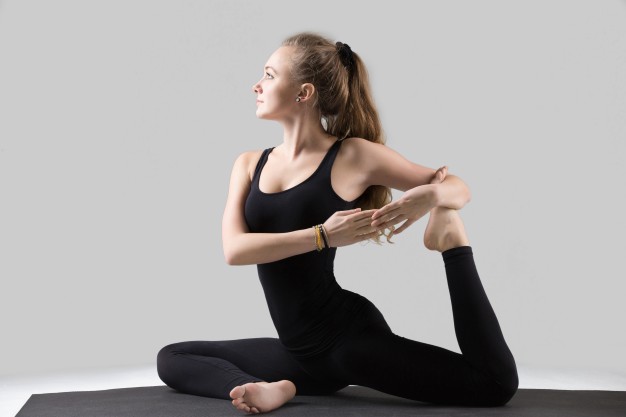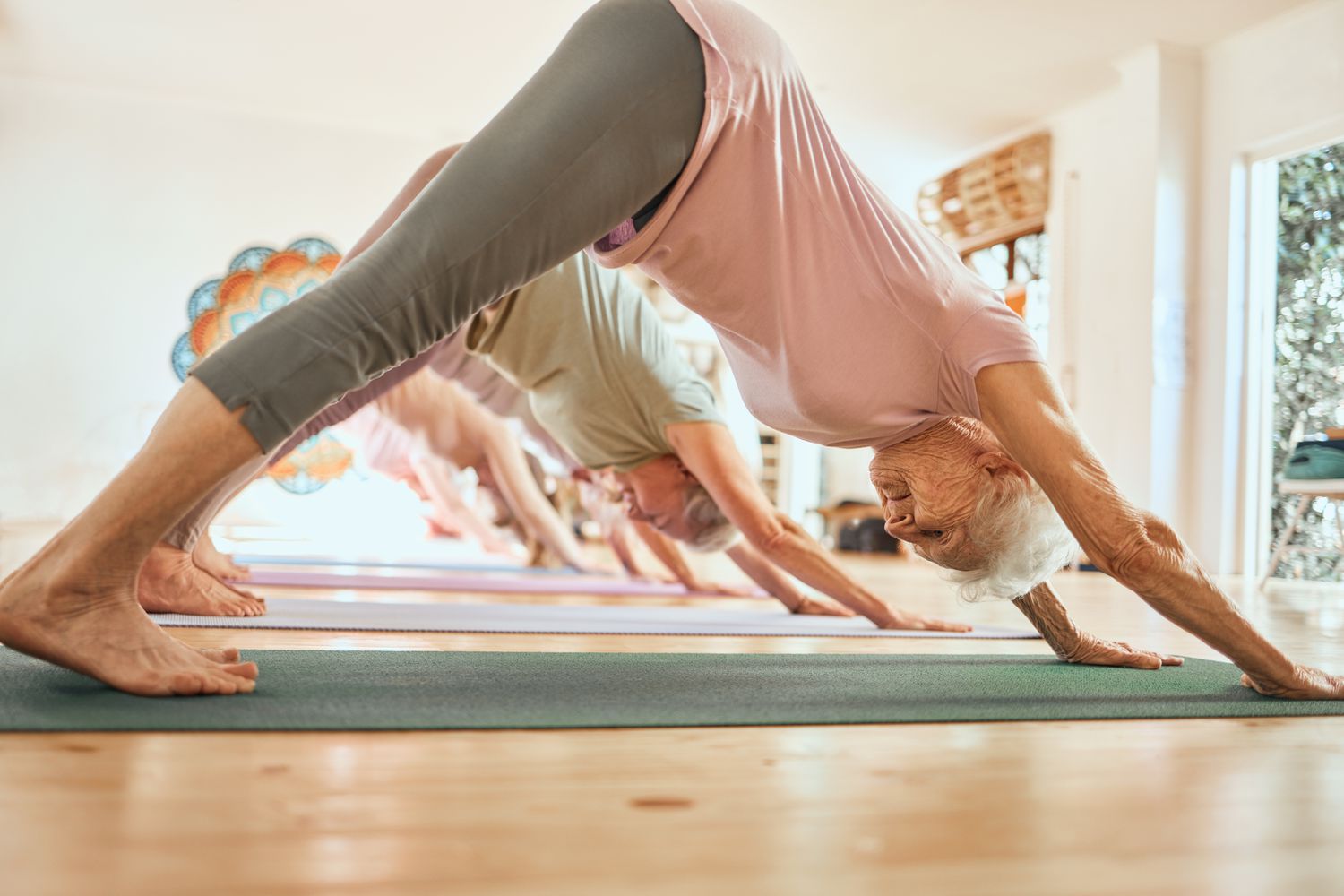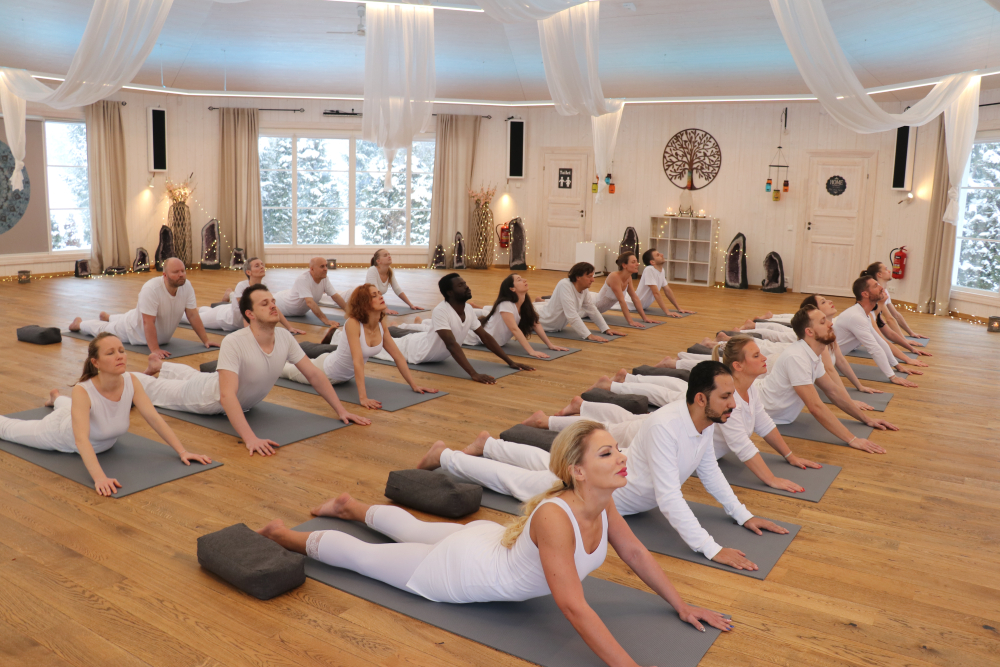Picture this: It’s a rainy Tuesday afternoon, and I’m slumped at my desk, staring at a screen that’s blurred from too many Zoom calls. My back aches like it’s plotting a rebellion, and my mind’s racing faster than a caffeinated squirrel. That’s when a friend drags me to my first yoga class. Skeptical? You bet. I figured it’d be a bunch of bendy folks in fancy pants chanting about inner peace. But halfway through a wobbly tree pose, something shifts. My breath slows, the knot in my chest loosens, and for the first time in weeks, I feel… grounded. That was five years ago, and yoga hasn’t just stuck around—it’s become my secret weapon against life’s chaos. If you’re wondering what yoga really is or if it can work its magic on you too, stick with me. We’re diving deep into this ancient practice that’s way more than Instagram-perfect poses.
Yoga isn’t some trendy fad; it’s a timeless toolkit for living better. At its core, it weaves together physical movement, breath control, and meditation to harmonize your body and mind. But what does it actually do? It builds strength without the grunt of weights, eases stress like a warm hug, and even sharpens your focus for those endless to-do lists. Backed by science from places like Johns Hopkins, yoga’s perks range from better flexibility to lower blood pressure. Whether you’re a desk warrior or a weekend hiker, there’s a style that fits. By the end of this, you’ll see why millions swear by it—and maybe roll out your mat tonight.
Unraveling the Mystery: What Exactly is Yoga?
Yoga is often boiled down to those graceful poses you see online, but it’s so much richer—a holistic practice that unites body, breath, and spirit. Originating from Sanskrit, the word “yoga” means “to yoke” or unite, hinting at its goal: linking your physical self with something deeper, like awareness or the universe. It’s not about touching your toes; it’s about tuning into the present moment, one exhale at a time.
Think of it as a choose-your-own-adventure for well-being. You can flow through dynamic sequences for a cardio kick or melt into restorative holds for pure relaxation. No matter the flavor, yoga invites you to listen to your body, not force it. And here’s the kicker: studies show regular practice can rewire your brain for calmer responses to stress. If that sounds woo-woo, just remember my rainy-day epiphany—it turned a cynic like me into a believer.
The Eight Limbs of Yoga: A Roadmap to Balance
Patanjali, the sage who penned the Yoga Sutras around 400 CE, outlined eight limbs as yoga’s ethical and practical guide. These aren’t rungs on a ladder but interconnected branches, starting with yamas (like non-violence and truthfulness) and moving to asanas (the poses we know). They culminate in samadhi, a state of blissful union.
This framework keeps yoga grounded in philosophy, not just fitness. For beginners, focusing on the first few—like breath awareness (pranayama)—can transform a simple stretch into mindful magic. I once skipped the ethics part and wondered why my practice felt shallow; weaving them in added depth, like seasoning a bland soup.
Beyond the Mat: Yoga’s Philosophical Heart
At its soul, yoga probes big questions: Who am I? How do I live fully? It’s less about enlightenment overnight and more about steady self-discovery through meditation (dhyana) and ethical living. This isn’t preachy—it’s empowering, helping you navigate modern mayhem with grace.
In my life, this showed up during a job loss; yoga’s teachings on impermanence turned panic into perspective. It’s why yoga endures: it meets you where you are, offering tools for joy amid the grind.
A Journey Through Time: The Origins of Yoga
Yoga’s story stretches back over 5,000 years to the Indus Valley, where seals depict figures in meditative poses. It bloomed in ancient India through the Vedas, sacred texts blending rituals with inner quests. By the time Patanjali codified it, yoga was a path for seekers chasing liberation from suffering.
Fast-forward, and Westerners like Swami Vivekananda brought it stateside in 1893, sparking a global wave. Today, it’s adapted yet rooted—think high-tech apps alongside traditional ashrams. What hasn’t changed? Its promise of wholeness. I love how this history humbles me; no matter how “advanced” my downward dog gets, I’m part of something ancient and alive.
Ancient India and the Vedas: Where It All Began
The Rigveda, around 1500 BCE, whispers yoga’s first breaths through hymns on breath and unity. Sages in the Himalayas refined it, viewing the body as a temple for the soul. These roots emphasize harmony with nature, a reminder in our concrete world.
Exploring this via a trip to an Indian retreat once, I felt the weight of millennia—chanting under banyan trees, it was like time folding in on itself. That connection? Priceless for anyone dipping toes into yoga’s waters.
The Many Faces of Yoga: Exploring Different Styles
With over 100 styles, yoga’s like a buffet—pick what nourishes you. Hatha, the foundation, focuses on basics for balance. Vinyasa flows like a dance, syncing breath to movement. Then there’s the intense Ashtanga or chill Yin. Choosing one? Consider your goals: energy boost or wind-down?
The beauty is experimentation; I bounced between power flows and gentle restorative until settling on a hybrid. No wrong door—each style unlocks yoga’s gifts, from core fire to deep calm. Dive in, and you’ll find your groove.
To help you compare, here’s a quick table of popular types, based on insights from yoga experts. It’s not exhaustive, but it’ll point you toward your match.
| Style | Pace & Intensity | Focus Areas | Best For Beginners? | Example Poses/Elements |
|---|---|---|---|---|
| Hatha | Slow & Gentle | Breath, alignment, basics | Yes | Mountain, child’s pose; pranayama |
| Vinyasa | Flowing & Moderate | Cardio, creativity | With guidance | Sun salutations, warrior flows |
| Ashtanga | Vigorous & Structured | Strength, endurance | No, build up | Fixed sequence, jumps |
| Iyengar | Slow & Precise | Props, alignment | Yes | Blocks/straps for inversions |
| Yin | Passive & Deep | Flexibility, meridians | Yes | Long holds in pigeon, butterfly |
| Kundalini | Dynamic & Spiritual | Energy awakening | With teacher | Chanting, breath of fire |
This snapshot shows variety without overwhelm—start simple, evolve as you do.
The Magic on Your Body: Physical Benefits of Yoga
Yoga sculpts your physique subtly, boosting flexibility like a daily oil change for your joints. Research from the National Institutes of Health backs this: poses increase blood flow, easing everything from back pain to arthritis. It’s no gym grind, yet it builds core strength—hello, plank variations that sneak up on you.
Beyond tone, it sharpens balance, cutting fall risks as we age. I noticed this post-40; tree pose turned my inner klutz into a steady eddy. And heart health? Yoga lowers blood pressure, per Harvard studies, making it a low-key cardio win.
- Flexibility Gains: Regular stretching elongates muscles, reducing injury—perfect for runners or sitters.
- Strength Surge: Weight-bearing poses like warrior build lean muscle without bulk.
- Pain Relief: Targets chronic issues; one study saw back pain drop 30% after eight weeks.
- Better Sleep: Evening flows signal rest, improving quality per sleep science.
These aren’t hype; they’re hard-won from mats worldwide.
Taming the Mind: Mental and Emotional Gains
Yoga’s brain boost is where it shines brightest, fostering mindfulness that quiets mental chatter. Science from UCLA shows it shrinks the amygdala—your stress center—while growing the hippocampus for sharper memory. It’s like a reset button for anxiety, turning “what if” spirals into “what now?”
Emotionally, it builds resilience; practices like loving-kindness meditation amp compassion, even for that coworker who steals your lunch. Humor alert: My first savasana (corpse pose) had me giggling at how “dead” I felt—relaxed, not rigid.
Stress Buster Extraordinaire: Yoga’s Secret Sauce
Nothing melts tension like a good yoga session—cortisol dips, serotonin rises, per Mayo Clinic findings. It’s therapy on a dime, especially for us Type-As juggling life.
Let me share: During pandemic lockdowns, weekly virtual yin saved my sanity. Holding a pose for minutes forced me to breathe through boredom, emerging lighter. If stress is your shadow, yoga’s the light.
Busting Myths: Common Misconceptions About Yoga
Yoga gets a bad rap sometimes—too bendy, too spiritual, too easy. Truth? It’s adaptable, inclusive, and challenging in sneaky ways. Let’s debunk a few with a wink.
- Myth: You Need to Be Flexible: Nope! Yoga builds flexibility. I started stiffer than a board; now I’m no pretzel, but proud.
- Myth: It’s Just Stretching: Try a vinyasa flow—it’s a full-body sweat fest, rivaling HIIT.
- Myth: Only for the Young and Lithe: Seniors and plus-sizers thrive; modifications make it universal.
- Myth: It’s a Religion: Philosophy, yes; dogma, no. Practice secularly if that’s your vibe.
Pros of embracing the real yoga: Authentic growth, fewer injuries. Cons of myths? Missed joy—don’t let them gatekeep your glow-up.
Your First Downward Dog: Getting Started with Yoga
Eager to unroll? Start small: 10-15 minutes daily trumps sporadic marathons. Find a quiet spot, dim lights, and cue upbeat tunes if silence spooks you. Breath is boss—inhale calm, exhale doubt.
For navigational ease, apps like Down Dog or Glo offer on-demand classes (check Yoga Journal’s beginner guide for more). Studios? Search local via MindBody app—many offer free intros. Transactionally, snag a grippy mat; top picks include Manduka for durability or Jade for eco-vibes (peek Gaiam’s recommendations).
Home vs. studio? Here’s a quick pros/cons to decide:
Home Practice
- Pros: Flexible schedule, no commute, privacy for wobbles.
- Cons: Lacks community vibe, easy to skip without accountability.
Studio Classes
- Pros: Expert cues, motivation from groups, instant feedback.
- Cons: Costlier, fixed times, potential intimidation.
I mix both—home for lazy Sundays, studio for that electric energy. Tips for newbies:
- Listen to your body; props like blocks are friends, not cheats.
- Hydrate, but skip heavy meals pre-practice—trust me on the downward dog burp.
- Track progress in a journal; celebrate small wins, like nailing child’s pose without snoozing.
You’re not auditioning for Cirque du Soleil—progress is personal.
People Also Ask: Quick Hits on Yoga Curiosities
Google’s “People Also Ask” bubbles up real curios from searchers like you. Here’s a roundup with straightforward answers, pulled from top queries.
What is yoga good for?
Beyond fitness, it tackles stress, boosts mood via endorphins, and aids digestion. Science links it to lower inflammation—hello, glowing skin.
Who should not do yoga?
Most can, but pregnant folks, injury-prone, or glaucoma sufferers should consult docs. Modifications keep it safe for all.
Is yoga a religion?
No—it’s a practice open to any belief. Skip chants if they don’t vibe; focus on breath for secular wins.
How often should you do yoga?
Twice weekly for starters, building to daily shorts. Consistency beats intensity; even 20 minutes shifts the needle.
These nuggets scratch the itch—dive deeper as you go.
Frequently Asked Questions About Yoga
Drawing from common newbie queries (shoutout to forums like Reddit), here’s the scoop on yoga’s everyday enigmas. Short, sweet, and straight-talk.
Q: I’m not flexible—can I still do yoga?
A: Absolutely! Yoga meets you at your level, improving bendiness over time. Start with gentle hatha; I was a human pretzel wannabe at first.
Q: How often should I practice to see results?
A: Aim for 3-4 sessions weekly. Noticeable shifts in mood and mobility hit around month one—patience is key.
Q: What should I wear to yoga class?
A: Comfy, breathable clothes that move with you. Leggings and a tee work; no need for Lululemon splurges unless it sparks joy.
Q: Do I need props or a fancy mat?
A: Basics suffice—a towel as a strap, wall for balance. Invest in a non-slip mat later for safety.
Q: Is yoga okay if I have back pain?
A: Often yes, with teacher guidance. Poses like cat-cow soothe; avoid if acute—chat with a pro first.
Got more? Hit the comments or explore MedlinePlus for health Qs.
Yoga’s not a quick fix but a lifelong companion, turning “I can’t” into “Watch me.” From my desk-drenched start to now flowing through sun salutations at dawn, it’s reshaped how I move—and live. Grab that mat, breathe deep, and let it surprise you. What’s your first pose? The world’s waiting for your stretch.




